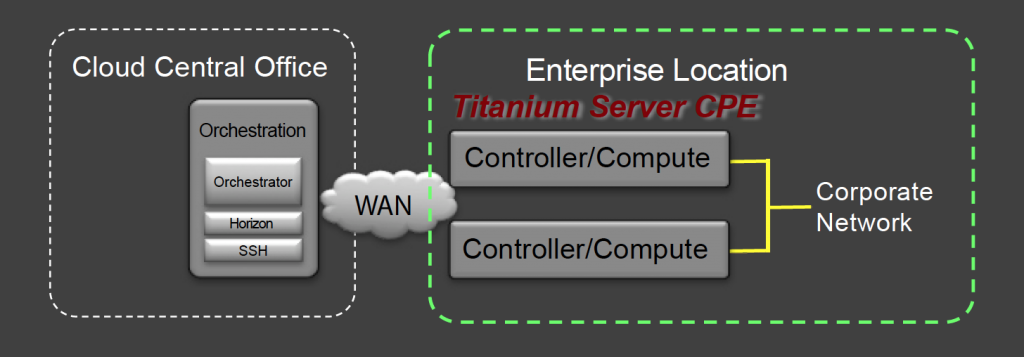Accelerate the deployment of reliable, cost-effective and flexible virtual CPE
If you’re working on the deployment of virtual CPE solutions, you’ll want to check out the recently-published whitepaper Wind River and Intel Join Forces on Reference Design for Virtual Business Customer Premises Equipment. The paper describes the reference platform developed by Wind River in collaboration with members of the Intel Network Builders and Wind River Titanium Cloud ecosystems.
By Jeff Gowan.
The platform demonstrates Titanium Server’s unique ability to run a multi-vendor service chain on just two servers, while still maintaining a level of service reliability that meets stringent telecomms Service Level Agreements (SLAs). The solution discussed in the paper includes hardware and software components from ADLINK, ADVA, Brocade, Check Point, Intel, Riverbed and Wind River.
This blog post highlights four of the key points covered in the paper. If you are interested in reading more detail about the items I’ve listed, plus many more, take a look at the whitepaper, Wind River and Intel Join Forces on Reference Design for Virtual Business Customer Premises Equipment.
Key components
In order to build an effective and reliable virtual Business Customer Premise Equipment (vBCPE) telecomms solution, you need four key components. First, you start with telco-grade, Intel Architecture based multi-core processor. Then you must have a highly reliable, high performance NFV infrastructure software platform. Once this infrastructure is in place, you then add the various Virtual Network Functions (VNFs) needed to deliver the services your customers need. The final element of the solution is management and service orchestration.
Deployment
Once the solution is built, there are three ways to deploy. You can install servers and VNFs in a telecomms data centre and deliver services from this central location. Alternatively, when services are latency sensitive or require maximum security you may consider deploying the solution entirely at the customer location.

In many cases, in order to maximise your flexibility it makes the most sense to implement a hybrid approach with centralised management/orchestration and distributed compute nodes.
Optimise resources
In order to make the system cost effective it must maximise efficiency by optimising the resources available. Unlike any other solution, the Titanium Server CPE platform offers highly available, carrier grade network virtualisation that deploys on only two servers. The integrated accelerated virtual switch maximises the number of Virtual Machines (VMs) that can run on each processor, thereby increasing VM density and lowering operating expenses.
Solid foundation
At the foundation of the solution you must select the right software. Currently, the most viable foundational software is OpenStack, the open source cloud operating system that is quickly becoming the de-facto standard for data centre and NFV applications. However, as with any open source software it is a starting point and not suitable for commercial deployment by itself. In fact there are some very specific drawbacks to OpenStack that limit its usefulness for vBCPE deployments. Titanium Server, however, includes enhancements to OpenStack so anyone looking to deploy a vBCPE solution can do so with the confidence that it will be high performance, highly reliable and totally interoperable.





